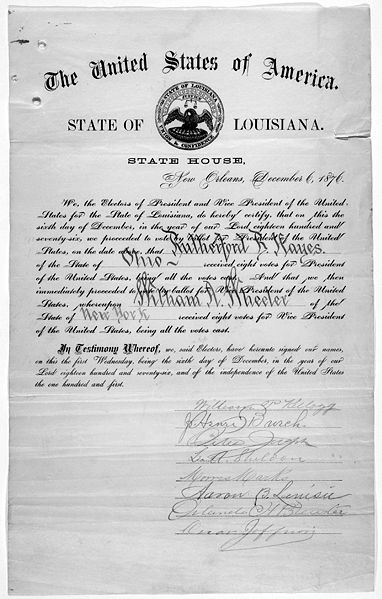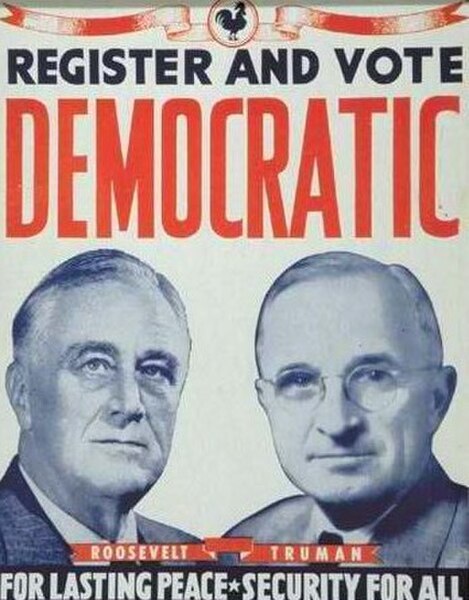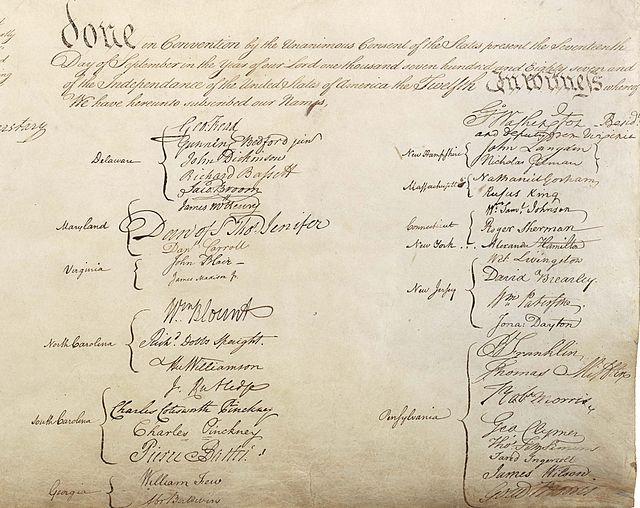Article Two of the United States Constitution
Article Two of the United States Constitution establishes the executive branch of the federal government, which carries out and enforces federal laws. Article Two vests the power of the executive branch in the office of the president of the United States, lays out the procedures for electing and removing the president, and establishes the president's powers and responsibilities.
George Washington's inauguration as the first U.S. president, April 30, 1789, by Ramon de Elorriaga (1889)
Certificate for the vote for Rutherford B. Hayes and William A. Wheeler for the State of Louisiana
In this 1944 poster, Franklin Roosevelt (left) successfully campaigned for a fourth term. He was the only president who served more than two terms.
1888 illustration of new President John Tyler receiving the news of President William H. Harrison's death from Chief Clerk of the State Department Fletcher Webster
Constitution of the United States
The Constitution of the United States is the supreme law of the United States. It superseded the Articles of Confederation, the nation's first constitution, on March 4, 1789. Originally including seven articles, the Constitution delineates the national frame and constrains the powers of the federal government. The Constitution's first three articles embody the doctrine of the separation of powers, in which the federal government is divided into three branches: the legislative, consisting of the bicameral Congress ; the executive, consisting of the president and subordinate officers ; and the judicial, consisting of the Supreme Court and other federal courts. Article IV, Article V, and Article VI embody concepts of federalism, describing the rights and responsibilities of state governments, the states in relationship to the federal government, and the shared process of constitutional amendment. Article VII establishes the procedure subsequently used by the 13 states to ratify it. The Constitution of the United States is the oldest and longest-standing written and codified national constitution in force in the world.

Page one of Jacob Shallus' officially engrossed copy of the Constitution signed in Philadelphia by delegates of the Constitutional Convention in 1787
Scene at the Signing of the Constitution of the United States on September 17, 1787, a 1940 portrait by Howard Chandler Christy depicting the signing of the Constitution in Philadelphia
"We the People" in its original edition
The signatures in the closing endorsement section of the United States Constitution








